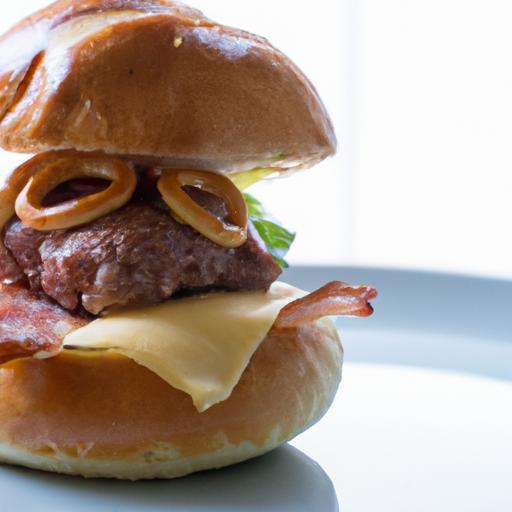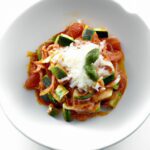There’s something undeniably magical about the first bite of a perfectly crafted smash burger – the sizzle, the sear, the symphony of flavors that dance across your taste buds. But behind this mouthwatering marvel lies a fascinating blend of culinary art and scientific precision. From the Maillard reaction that creates its signature crust to the optimal fat content that ensures juiciness, crafting the ultimate smash burger flavor is far more than just pressing meat on a griddle. In this article, we’ll peel back the layers of this beloved burger technique to explore the science that transforms simple ingredients into an unforgettable flavor experience. Prepare to look at your next smash burger not just as a meal, but as the delicious product of chemistry, temperature, and texture working in perfect harmony.
The Science Behind Crafting the Ultimate Smash Burger Flavor
Unlocking the secrets of the science behind crafting the ultimate smash burger flavor transforms a simple meal into a culinary masterpiece. From the sizzle of the cast iron to the intoxicating aroma of the perfect crust, this burger is all about maximizing flavor through technique and ingredient harmony. Smash burgers owe their magic largely to the Maillard reaction – that remarkable browning process that develops rich, complex flavor and irresistible texture.
Prep and Cook Time
- Preparation: 10 minutes
- Cooking: 8 minutes
- Total Time: 18 minutes
Yield
- 4 Smash Burgers (4-inch patties)
Difficulty Level
- Medium – Requires practiced technique for smashing and perfect crust formation
Ingredients
- 1 lb (450g) ground chuck (80/20 lean-to-fat ratio, freshly ground if possible)
- 4 burger buns (soft potato buns or brioche recommended)
- 4 slices sharp cheddar cheese
- 1 tablespoon vegetable oil (for cooking)
- Salt and freshly ground black pepper, to taste
- 4 tablespoons unsalted butter (for toasting buns)
- Fresh lettuce leaves, washed and dried
- Thinly sliced red onion
- Pickles, sliced thin
- Homemade smash burger sauce:
- ½ cup mayonnaise
- 2 tablespoons ketchup
- 1 tablespoon yellow mustard
- 1 teaspoon smoked paprika
- 1 teaspoon garlic powder
- 1 teaspoon pickle juice
Instructions
- Form the patties: Divide the ground chuck into four equal portions, gently loosely forming balls without compressing the meat. This preserves the texture and promotes juiciness.
- Preheat your skillet: Heat a heavy cast iron pan or griddle over medium-high heat until very hot, about 5 minutes. Add 1 tablespoon of vegetable oil and swirl to coat.
- Toast the buns: In a separate pan, melt butter and toast the buns cut-side down until golden and crispy, about 1-2 minutes. Set aside.
- Smash the patties: Place each meat ball on the hot skillet and press immediately using a stiff spatula or a specialized burger press. Smash down firmly to about ¼ inch thickness. Hold pressure for 10 seconds to ensure even crust.
- Season: Sprinkle salt and pepper liberally on the exposed surface immediately after smashing to enhance flavor depth through seasoning.
- Cook undisturbed: Let the patties cook until the edges brown and crisp up, about 2-3 minutes. Avoid moving them to let the Maillard reaction fully develop.
- Flip and cheese: Flip patties carefully, add a slice of cheddar immediately, and cook another 1-2 minutes to melt cheese and finish cooking through medium rare to medium, preserving juiciness.
- Build your burger: Spread smash burger sauce on the toasted buns, layer with lettuce, onions, pickles, and top with the perfectly crusted patty. Crown with the top bun.
- Serve immediately: For the ultimate experience, serve hot with crispy fries or a simple side salad.
Tips for Success
- Use freshly ground beef or freshly formed meat balls to capture beef’s natural texture and flavor.
- Don’t over-handle the meat-overworking causes a dense patty.
- Apply even, firm pressure when smashing for maximum surface contact and crust formation.
- Maintain high pan temperature to trigger an optimal Maillard reaction without steaming your patties.
- For variation, experiment with different cheeses like pepper jack or smoked gouda for unique flavor layers.
- Make the smash burger sauce a day ahead; flavors meld and intensify beautifully.
Serving Suggestions
Present these smash burgers on rustic wooden boards or vibrant plates to highlight their rich colors and textures. Garnish with extra crisp lettuce leaves and a stack of tangy pickles for crunch contrast. Pair with a tall glass of iced craft beer or a zesty lemonade to balance the umami powerhouse of the burger. Adding waffle fries or a light coleslaw rounds out this satisfying meal perfectly.
| Nutrient | Per Serving |
|---|---|
| Calories | 650 kcal |
| Protein | 38g |
| Carbohydrates | 40g |
| Fat | 38g |

For more insights on meat cooking techniques, check out our Ultimate Beef Cooking Guide. To deepen your understanding of the Maillard reaction’s chemistry, visit the Science Daily article on Maillard browning.
Q&A
Q: What makes a smash burger different from a regular burger?
A: The smash burger is all about technique. Unlike a thicker patty, the meat is pressed-or “smashed”-onto a hot griddle to create a thin, crispy crust. This quick sear caramelizes the proteins and sugars in the beef, unlocking that signature flavor punch and textural contrast you crave.
Q: How does smashing the beef impact flavor development?
A: When the patty hits the hot surface and is pressed down, the increased contact promotes the Maillard reaction-a chemical dance between amino acids and sugars. This browning effect produces complex, savory compounds that give the smash burger its irresistible umami and slightly sweet, toasted notes.
Q: Why is the choice of beef important for a smash burger?
A: Fat content is king. Ideally, ground beef with around 20% fat gives the right balance of juiciness and flavor. The fat melts during cooking, basting the meat and amplifying mouthfeel, while helping achieve that crisp, golden crust without drying out the patty.
Q: Does seasoning before or after smashing matter?
A: Timing is crucial. A sprinkle of salt right before smashing helps draw out a bit of moisture, enabling a better crust formation. It also enhances flavor without pulling too much juice. Seasoning too early can cause the meat to lose juices, while seasoning too late might result in a flat taste.
Q: How do temperature and cooking surface contribute to the smash burger’s flavor?
A: High heat is essential. A blazing-hot cast-iron or steel griddle ensures immediate caramelization. The intense temperature causes rapid crust formation, locking in juices and creating that contrasting crunch. A cooler surface won’t develop the same depth of flavor or texture.
Q: Can the layering of toppings influence the flavor science?
A: Absolutely. The smash burger thrives on balance. Sharp pickles, melty cheese, tangy sauce, and soft buns all interplay with the rich meat crust. The fat from cheese complements the savory patty, while acidic elements cut through the richness, creating a harmonious flavor explosion.
Q: What’s the secret to keeping a smash burger juicy despite its thinness?
A: Quickly cooking the patty at high heat seals in juices before they escape. Plus, smashing reduces the thickness but increases surface area contact, meaning the burger cooks uniformly fast-retaining moisture inside while developing that crave-worthy crust outside.
Q: How does the physical act of smashing influence texture?
A: Smashing creates an uneven, crispy exterior riddled with nooks and crannies. These irregularities trap melted cheese and condiments, enhancing bite complexity and keeping the burger juicy and flavorful with every mouthful.
Q: Is smash burger flavor more about chemistry or artistry?
A: It’s a beautiful blend of both. The chemistry-the Maillard reaction, fat rendering, moisture retention-lays the foundation. Yet, the artistry lies in knowing when, how hard, and how hot to smash, plus how to layer accompaniments. Together, they craft the ultimate flavor experience.
Q: Can home cooks replicate restaurant-quality smash burgers?
A: Definitely! With a sturdy spatula, a hot griddle or skillet, and quality beef, home chefs can unlock the flavor secrets of smashing. Practice timing, seasoning, and heat control, and you’ll master that crispy, juicy balance that defines the ultimate smash burger.
The Way Forward
In the end, crafting the ultimate smash burger flavor is a precise dance of science and artistry. From the Maillard reaction’s caramelized magic to the perfect fat-to-meat ratio, every detail transforms a simple patty into a symphony of taste and texture. By understanding the chemistry behind each sizzle and smash, home cooks and burger aficionados alike can elevate their creations from ordinary to unforgettable. So, next time you press that spatula down, remember-you’re not just making a burger, you’re engineering a masterpiece of flavor.


